
In young children, the development of caries of milk teeth usually proceeds much more rapidly than in adults, and often the destruction affects several teeth at once. In such situations, the prolonged inaction of the parents of the child can lead to very serious consequences.
Do not think that "these are just milk teeth, and they will still fall out." The infectious carious process is not limited to hard tooth tissues, rather quickly going beyond the root with purulent fusion of the surrounding soft tissues. In such cases, the best option for the health and normal life of the child is the premature removal of the baby tooth, which, by the way, in itself often traumatizes the psyche of the young child and causes persistent fears to the dental office.
The photo below shows examples neglected caries milk teeth in children (including with a periodontitis complication in the second example):
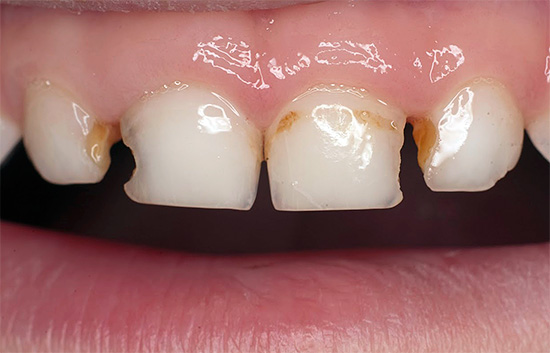

But the main result of such a premature removal of milk teeth is various violations of the bite, speech, appearance of the child (face shape), the possible appearance of inferiority complexes in the team (when the baby has been walking with rotten teeth for years or without them). About what will happen if we do not treat dental caries of milk teeth in young children, as well as about the most dangerous complications, we will talk further more in detail, but everything will be in order ...
According to statistics, caries of dairy teeth occurs in 12% of babies under one year of age, and in 5 years, dentists already have this disease in about 73% of children. If you think about these statistics, it turns out that although baby teeth begin to erupt on average from 4-6 months of a child’s life and it would seem that they should be “fresh” and healthy, but already at 12 months of life almost every tenth child has caries at any stage on the baby tooth. Most clearly, these data reflect the plight of babies in small villages and cities where there are no children's dentists or hygienists.
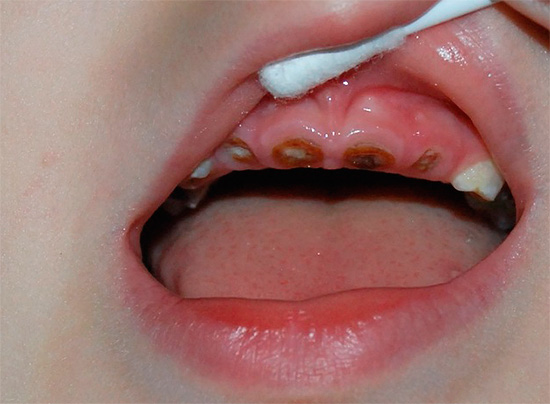
A carious cavity that forms in temporary teeth that have not yet become stronger is a source of infection with numerous pathogenic microflora. This focus directly or indirectly affects the protective functions of the child's body. Problems arise not only in connection with pain in caries-damaged teeth from various irritants (cold, sweet, sour), but can also escalate into complications of caries, which often cast doubt on the continued existence of a milk tooth. At an early age, such complications often lead to serious conditions, including the need to save the child’s life when a purulent infection spreads to the soft tissues surrounding the tooth (abscess, phlegmon, sepsis, cervical and other thrombosis, meningitis, thrombophlebitis).
Look at a few more photos that clearly demonstrate the consequences of the lack of normal care of the teeth of a child from an early age:
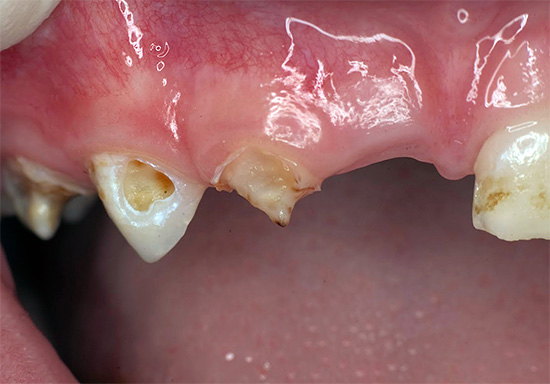
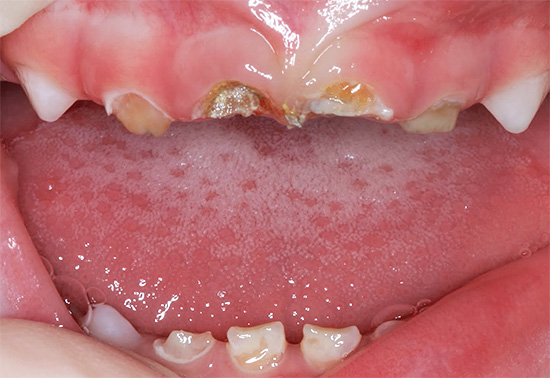
Especially I want to note the fact that the infection in the carious cavity often gives complications with the slightest shifts in the immunity of the child, for example, with hypothermia, severe stress:
- on the nose - persistent runny nose, antritis;
- ears - otitis and ear pains;
- throat - sore throats;
- and even on the gastrointestinal tract - digestive disorders.
Attempting parents to disregard this problem is a crime against the health and life of a small person.
Why do milk teeth die from bacteria?
Numerous studies have shown that the cause of decay of primary teeth are bacteria, which, as a rule, are transmitted from mother to baby. The main "destroyers" of teeth are Streptococcus mutans and Streptococcus sanguis. These microorganisms usually get into the mouth of the child when using common cutlery, when parents lick spoons, nipples, and even when kissing.

It is interesting
According to the results of studies published in 2008 in “Pediatric Dentistry”, there is direct evidence of the fact that the mother is the primary source of Streptococcus mutans (mutant streptococci) that can inhabit the body of children. According to other studies, it turned out that fathers are potential sources of infection.
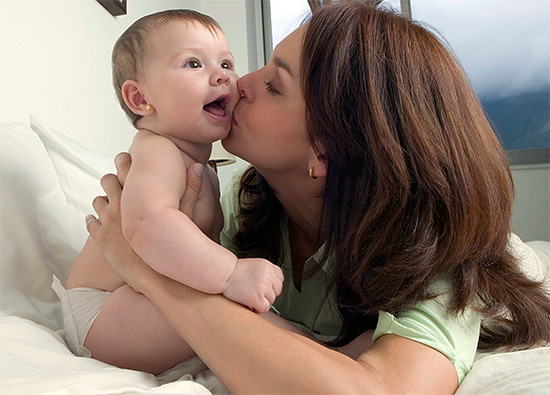
Thus, the cause of the destruction of milk teeth during caries is, in fact, a bacterial infection that can be transmitted from one person to another.This is particularly important at the stage of teething, because it is at a very early age that the baby’s baby’s teeth are particularly vulnerable to the cariogenic effects of microorganisms.
But not everything is as sad as it may seem at first. The presence of cariogenic bacteria in the baby’s saliva is only a kind of puzzle element, which in itself does not cause tooth decay. In fact, the destruction is caused by a whole complex of factors: the presence of cariogenic microorganisms, oral hygiene, eating habits, their modes, frequency and duration, features of the baby’s saliva (buffer capacity, presence of protective immunoglobulins, mineralizing properties), heredity of the baby.
As practice shows, the constant sucking of a feeding bottle filled with juice, milk or other sugar-containing liquid is especially strongly affected. Bacteria use sucrose and some other carbohydrates for nutrition and reproduction, while releasing organic acids that demineralize tooth enamel. Early caries of milk teeth is formed in the subsurface enamel layer and gradually captures all the enamel with the formation of a small cavity at first,and then deep - during the transition of carious destruction to dentine (while the teeth can begin to hurt badly).
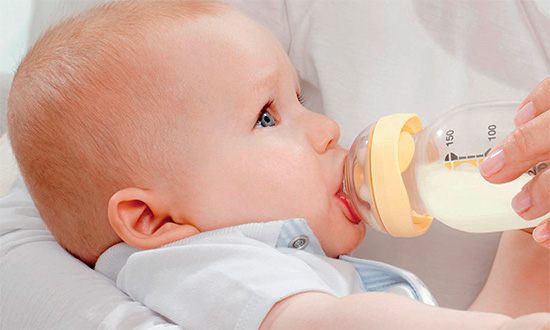
On a note
According to the American doctor Jane Soxman, if reproduction of cariogenic bacteria is not actively restrained, they will soon colonize the entire oral cavity and will actively attack already permanent teeth after their appearance.
The photo below shows the initial caries of milk teeth:
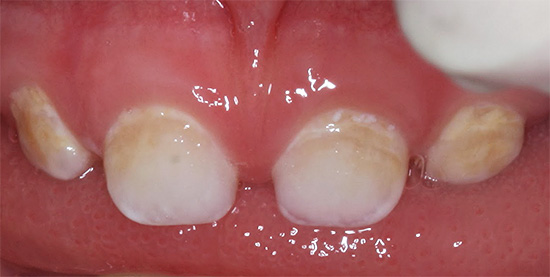
How to recognize caries on baby’s teeth in time
Most often, caries first appears on the front milk teeth and manifests itself as patches of various shades (white, yellow, brown, black) or carious cavities (cavities) visible to the naked eye. Lesions can be located in the cervical (root) area of milk teeth, on one or two contact (interdental) walls, and also capture half or most of the tooth crown.
This photo shows the earliest signs of caries of milk teeth in a child - the enamel has become white due to demineralization:
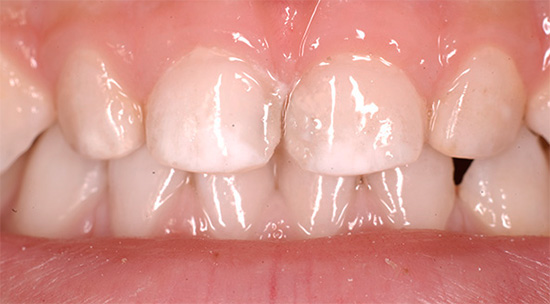
If caries affects the fossa (fissure) on the primary milk teeth, then these areas become dark brown or even black. Further progression of caries leads to the fact that the integrity of the enamel in the fissure is broken and a clearly visible cavity with the naked eye is formed, or, more simply, a “hole” in a baby tooth.
So, the main signs of caries of milk teeth:
- Visuals The appearance of suspicious stains on the teeth (especially in a short time).
- Painful. Often with caries, a child begins to complain of painful reactions from cold, sweet, hot, etc. Sometimes the teeth hurt very much, and sometimes they almost do not bother.
- The appearance of the smell from the child's mouth. Under the action of cariogenic microorganisms, the food particles in the oral cavity actually rot. At the same time, a specific odor is formed, which should push at the thought of caries of milk teeth.
- The multiplicity of manifestation. Due to the insignificant mineralization of the enamel of milk teeth, caries begins to develop with almost the same intensity on several teeth at once, which is the cause of the appearance of multiple lesions. The accumulation of carbohydrate residues in the zones of retention (food retention): near the gums, in the gaps between the teeth, in the pits (fissures) creates a favorable environment for the active feeding of bacteria,provoking the dissolution of enamel.
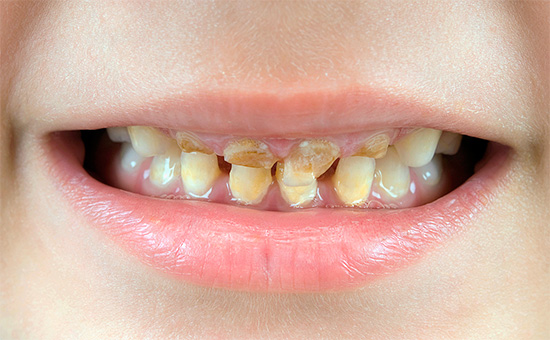
Is there a link between caries and breastfeeding?
The so-called "bottle" caries develops in children from zero to four years old and destroys the milk teeth after their eruption over a certain period of time. Most often, bottle caries develops on the front teeth in the cervical area with a partial or full circumference of the crown - in this case it is also called circular caries.
Often, one can also observe white or black spots in the gum zone extending to the boundaries of the gaps between the teeth. Sometimes the full coverage of the crown of the primary tooth is circular caries - in such a situation, the entire coronal part can easily break off.
Pictures of milk teeth with circular caries:

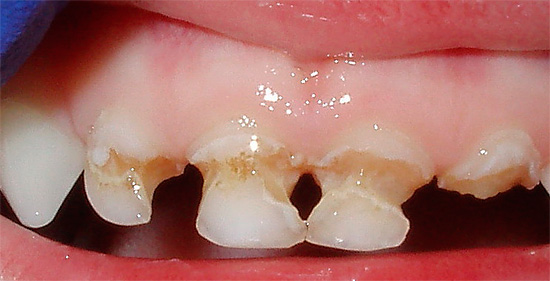
Breastfeeding does not directly provoke bottle caries. According to experts, only frequent and prolonged night feeding without hygienic procedures after it can provoke and accelerate the formation of caries on baby teeth.
At the same time, it does not matter at all whether they are breastfed or from a bottle, with milk or juice. The main thing to start the formation of dental plaque on milk teeth and cariogenic activity of microbes is frequent feeding of the child, especially in sleep, feeding with sweets between main meals, as well as the lack of hygienic measures after meals.
An attempt not to treat circular caries of primary teeth can result in serious multiple defects of crowns, up to chipping and breaking off. Often this is accompanied by pain when eating or even spontaneous sharp pain. The loss of the function of a large number of teeth entails a violation of bite, chewing, digestion, and the general well-being of the child.
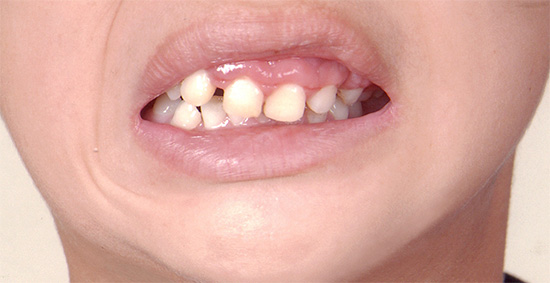
On a note
For treatment of bottle (circular) caries of milk teeth, therapeutic fluoride-containing preparations are used, which can be applied both in the clinic and at home, if you follow the instructions of the doctor. Laser treatment of caries and ozone treatment at an early age does not apply. In order to prevent children's decay of milk teeth, dentists recommend cleaning the baby's teeth after each meal, and parents of young children should follow the steps of processing and sterilizing nipples and bottles.
Do baby teeth hurt badly from tooth decay?
Caries on milk teeth can occur both asymptomatically and with pain characteristic for it. As a rule, a tooth hurts only from the effects of any irritants (as noted above, it can be hot or cold food, something salty, sweet or sour). While the effect of an external factor lasts, a painful attack keeps.
Depending on the stage of tooth decay, pain reactions are distinguished when:
- Superficial caries - in this case, children usually complain of pain from sweet and sour foods;
- With average caries - short-term pain from cold and hot foods, sweet and sour;
- With deep caries - with this pain symptom is more often expressed from all the listed stimuli, as well as from the meal itself (mechanical irritation).
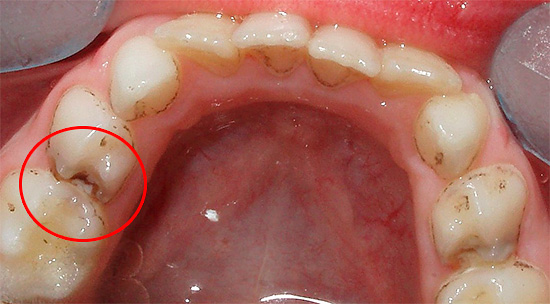
At initial caries milk teeth (at the stage of white spots) pain does not happen yet, so it is easier to start treatment at this stage.
The possibilities of modern treatment
Modern pediatric dentistry has various methods of treating caries in children, even at a very early age.Moreover, such treatment approaches are chosen that are distinguished by high reliability, safety and the least traumatic effect for the child’s psyche.
Main ways treatment of early caries of milk teeth - these are non-invasive or minimally invasive technologies:
- remineralization of enamel and dentin (restoration of the lost mineral structure);
- deep fluoridation;
- manual treatment of the carious cavity without the use of a drill;
- delayed filling;
and etc.
Especially great demand in the treatment of caries of milk teeth in the staining stage is the latest development - technology ICON (Ikon). It does not require long courses of treatment with remineralizing agents and fluorine preparations, since almost one visit is almost always enough for a carious stain to disappear from the tooth surface.
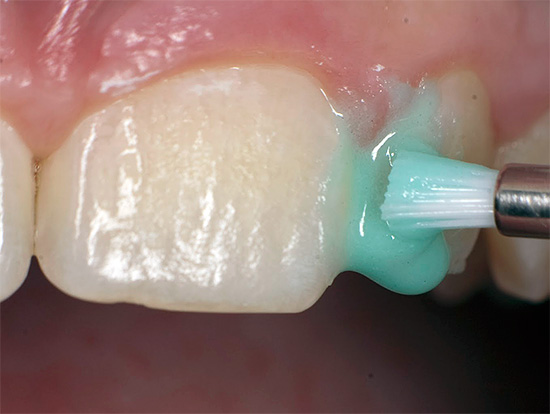
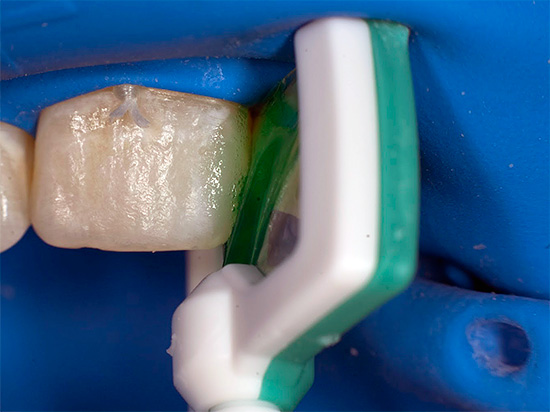
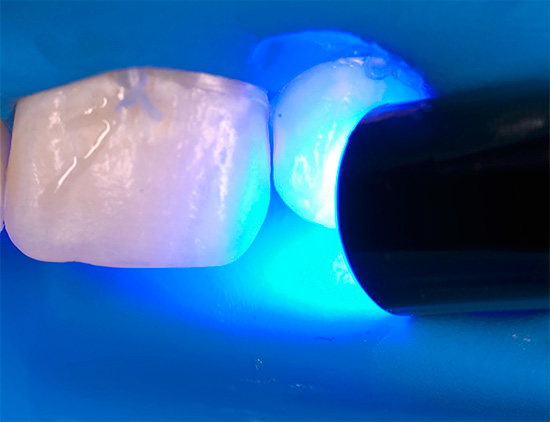
The meaning of the procedure is that after cleansing the enamel from plaque, a gel with a weak acid is applied to the carious stain, which removes the surface layer of enamel, and then a highly flowing polymeric material is cured by the light of the special lamp.At the same time, polymer resin fills the pores of enamel and hardens in them, creating a new durable and reliable structure.
It is interesting
Treatment using ICON technology is somewhat similar to tooth filling, but without the participation of standard equipment. This technology is actively used in orthodontic treatment after the removal of braces, as well as in the treatment of caries in the stage of stains located on the vestibular (external) and contact surfaces, that is, between the teeth. ICON technology is suitable for the treatment of early caries of milk teeth in children from 3 years.
If ICON technology is used for the treatment of initial caries, when there is no cavity yet, what if the destruction of the baby tooth has already crossed the boundaries of enamel and reached the dentin? In the event that a child has an increased fear of traditional methods of treatment based on the preparation of a carious cavity with a drill, then use the ART-method (atraumatic restorative treatment).
The photo below shows some of the tools used when using the ART-caries treatment technique - in fact, they replace the drill:


The meaning of the technique is simple: special sets of manual excavators and some other tools are used to cleanse the softened and infected tissues with the carious cavity, after which it is treated with weak antiseptic solutions and sealed with glass ionomer cements - materials that can permanently saturate the tooth tissues with fluorides.
Despite the significant drawback of the technique, consisting in the fact that pigmented (dark) untreated dentin often remains on the bottom and walls of the cavity, it is still possible to stop the progression of the decay of the milk tooth due to caries, to replenish the defect and return the tooth to normal chewing. , and also to eliminate painful symptoms from external irritants. And if this technology is not always suitable for permanent teeth, then for the treatment of carious foci of temporary teeth is sometimes the best option, so as not to injure the psyche of the baby.
Where to go for treatment
In the event of caries of dairy teeth or its complications, unprepared parents always have a problem: where should their teeth be treated? Often, "adult" dentists conduct a mixed reception, that is, they also carry out the treatment of children.
However, children's dentistry differs significantly from the “adult”, so you should choose a specially equipped dental institutions for children. The choice between public and private institutions rests on the financial component. It should be borne in mind that any savings on the health of the child often makes itself felt in the future.
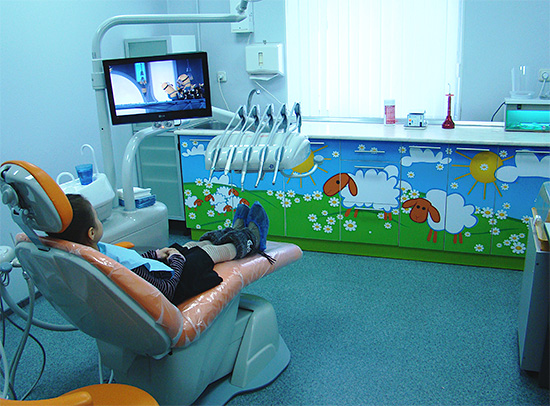
Of course, not all public institutions with free admission will receive poor quality treatment, but the frequent uneven distribution of young patients among several pediatricians who receive in a large hospital or clinic, leads to various paradoxes. Professional doctors who are ready to help a child with high quality are forced to serve between 15 and 25-30 or even more children per day, but not quite conscientious and not skilled doctors often have a lot of free time, but nobody wants to bring a child to them.
You need to understand that in those and other cases you may not receive quality and guarantee assistance. Moreover, in the conventionally “free” institutions most often use outdated methods and approaches to the treatment of caries, “old” equipment and not the most modern materials.

A large flow of patients excludes an individual approach, which cannot be said about private clinics and centers, where an individual plan of prevention and treatment is drawn up not for one day (as is most often in state institutions), but for years to come. The task of the clinic in this case is a mutually beneficial cooperation with parents in order to preserve the child’s milk teeth before their physiological change, taking into account the age and psychological status of the baby. In this case, experienced pediatric dentists establish the form of interaction in the form of a game.
From the observations of the dentist
One of the most effective ways in modern private dental clinics to cause a child’s interest in treatment is colored fillings that are installed on baby teeth in the treatment of caries. Popular sets of colored fillings from the German company Twinky Star allow the child to choose the color of the future fillings themselves. The set includes 7 colors: blue, orange, pink, yellow, green, etc. As a rule, the strongest motivation of the child in this case is to boast in front of his peers with a new beautiful filling.
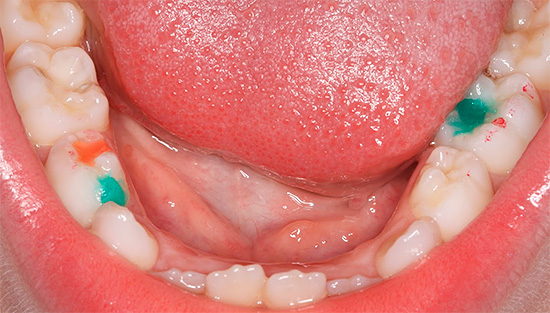
If the kid is afraid of doctors
To tempt a child to see a dentist, sometimes there is little persuasion, motivation with colored fillings or buying a new toy. For many children, the fear of a white coat is an almost insurmountable obstacle to the preservation of milky, and subsequently permanent teeth. Often in such cases one has to resort to the most, perhaps the most risky method of treatment - this is the use of anesthesia, when the child is immersed for a while in sleep.
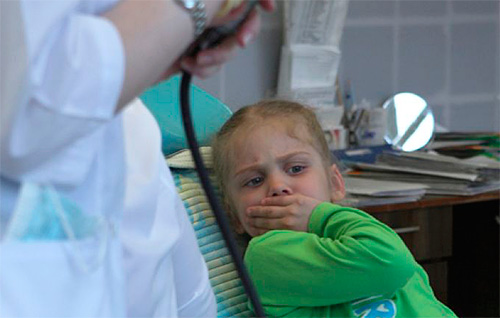
No matter how clinics and individual doctors present anesthesia, as a safe method of treatment, the facts of possible complications during and after anesthesia are still present and the percentage of failures (albeit small), it exists, which parents warn about signing the paper about possible negative consequences. use of general anesthesia.
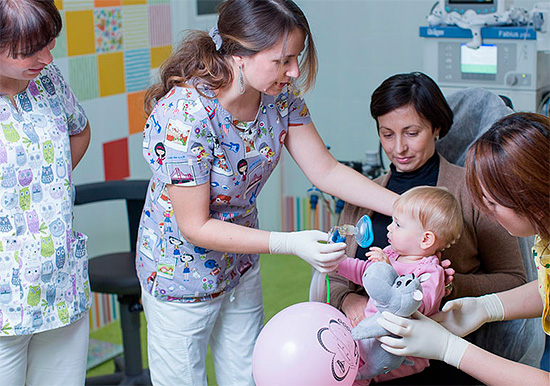
In this regard, of particular interest are drugs that have a sedative effect (suppression of consciousness), which allow manipulation when the patient is conscious, but does not feel fear. Such drugs (tranquilizers) are almost all available on prescription.
For example, in modern pediatric dentistry, the convenient non-prescription drug Tenoten is used for children, which is produced in tablets for resorption.Using the pill 20 minutes before the visit to the dentist can significantly reduce anxiety of the child, eliminates fear, increases the pain threshold, improves mood.
From all of the above, it is important to understand that only mutually beneficial cooperation and full cooperation between parents and a pediatric dentist will help create a truly comfortable environment for the prevention and treatment of a young child. This, in turn, will provide a real prospect of preserving milk teeth until their natural shift, and in order to preserve future permanent teeth, it will create the necessary positive attitude of the child to any dental procedures.
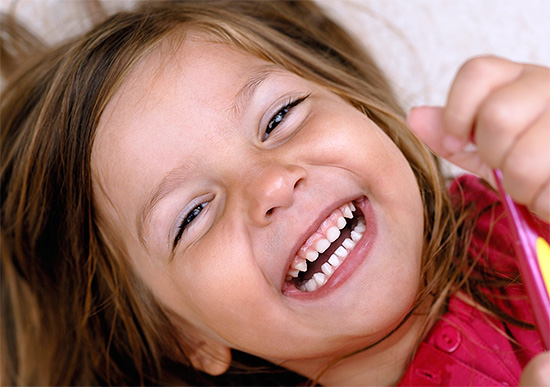
Create all the conditions for this, and your children will always have healthy teeth!
How prevention saves milk teeth
For effective prevention of primary teeth caries Of paramount importance is an integrated approach. At the same time, systemic and local methods of preventing carious processes are distinguished.
For a better understanding: systemic measures are the use of special products or drugs inside.Local methods of caries prevention include, first of all, applying various active mineralizing enamel components to teeth.
What should be understood by each parent on system activities:
- Limiting carbohydrates and increasing consumption of “hard” foods (fruits, vegetables). In many sources you can find the phrase: "eliminate sweets from the diet of the child." Unfortunately, this ideal option does not fit our realities, but it is quite possible to somewhat limit the reception of sweets to a young child. The big problem of parents is that not only the mothers and fathers themselves, but also numerous relatives, feed the child with cookies and sweets in between meals. In this case, one should not be surprised why, already at the age of 2-3 years, the little patients of the dentist feel at home in the dental office. Fruits and vegetables are great for completing the kid's meal, as the best option for self-cleaning the surface of the teeth.
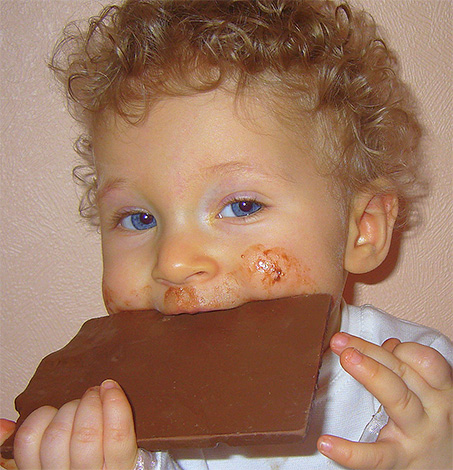
- Systemic consumption of products containing calcium can have a very positive effect on the stability of the baby’s primary teeth to caries.It's no secret that this useful element necessary for our bones and teeth is best absorbed from the following foods: milk, cheese, kefir, parsley, spinach, cream, cottage cheese, dried apricots, etc. Calcium preparations are prescribed by coordination with a pediatrician with the expectation of an individual age dosage of the child for a course of 2-4 weeks. In winter, it is recommended to combine such drugs with vitamin D supplements. Multivitamin complexes for children with mineral components, including calcium, are particularly relevant.
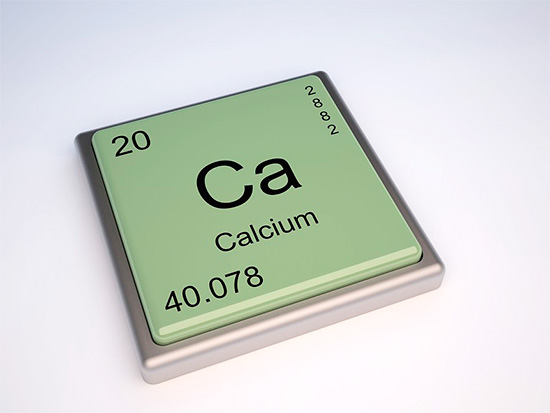
- Systemic use of fluoride. Generally speaking, most of the fluoride, as one of the most important components of the enamel mineral lattice, must come with water - this is how it is maximally absorbed in the body. Unfortunately, in many regions of Russia there is a serious shortage in the content of fluoride in drinking water, without which the baby’s baby’s teeth can be very quickly affected by caries. Based on the data on the fluorine content in the water supply system, a base of systemic prevention is formed, associated with the introduction of fluorinated milk, salt into the diet, as well as the appointment of fluoride-containing tablets, rinse solutions, gels for toothing in the clinic or for home use.Since fluoride in unskilled hands is poisonous and can harm the health and even the life of a child, it is necessary to consult a doctor before such a serious prevention of fluoride.
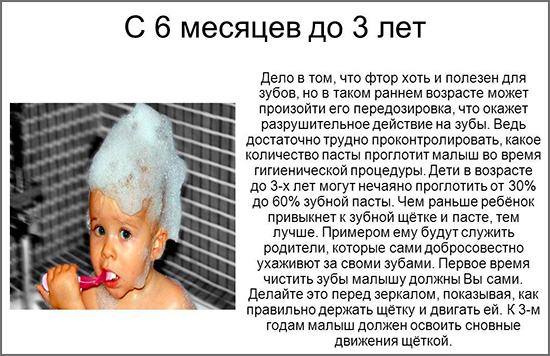
What you need to know about local preventive measures to protect milk teeth from caries at an early age of the child:
- High-quality cleansing by the parents of the baby the surface of the milk and permanent teeth with a toothbrush and paste. Such hygiene should be started after the appearance of the first baby tooth, for which special wipes are suitable, for example, Spiffies with special impregnation for better cleaning of plaque. You can even use simple gauze moistened with warm boiled water. It is important to understand that this treatment should be carried out exactly after the child has taken the food. It is enough to clean the surface of the teeth 2-3 times a day to significantly reduce the risk of bottle caries on the milk teeth.
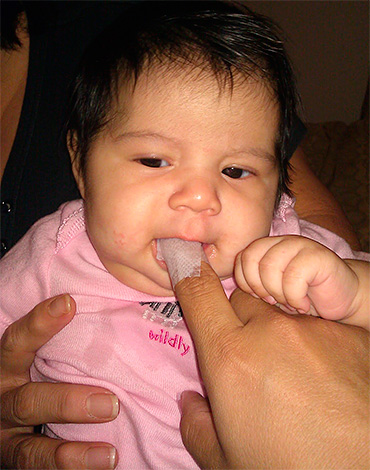
It is important to know
Starting to teach a child to a toothbrush should be already from 1.5-2 years in the form of a game. It is impossible to force a child by force, as this creates a persistent negative attitude towards hygiene. Parents of babies should remember that with an example of proper and effective tooth brushing you can easily motivate your child to acquire the same manual skills.
First, a paste that does not contain fluoride is used together with a toothbrush, and every year it should contain the desired concentration of fluoride recommended for this age. Orientation in the present time has become quite simple: almost on each paste for kids the recommended age of its application is written.
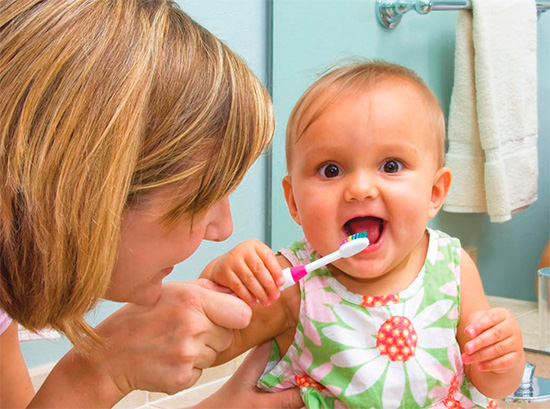
- Professional and home (under the supervision of the attending physician) use of deep fluoridation. Most often it is enamel or dentin-sealing liquid. The alternate application of preparations for deep fluoridation allows in a short time to strengthen the enamel of milk teeth and create a barrier to the action of acids of microorganisms from plaque. The use of topical fluoride-containing drugs is a point effect on the tooth tissue, bypassing the processes of prolonged absorption of fluoride from water or food. Especially since the correctly carried out method of deep fluoridation completely eliminates the likelihood of toxic effects of fluoride on the body.
As mentioned above, only an integrated approach with a competent combination of systemic and local prophylaxis will strengthen the enamel of milk and permanent teeth and protect the child from caries for a long time.
Useful video: why is it important to treat milk teeth?
How to properly care for the oral cavity in young children

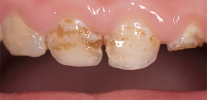
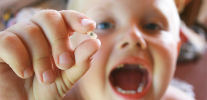
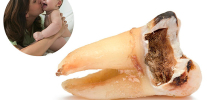
Baby 1 year 10 months. Upper incisors partially destroyed. What to do and where to go? The problem is that in our region, no one undertakes to do any procedures with such a small child.
We have the same problem.My daughter in 1.4 months. front teeth began to crumble sharply. Literally two weeks flew 3 teeth! Nobody wanted to treat either. In the city dental clinic for free silver. Now my daughter is 1.10 months old. and I see that the teeth continue to collapse. I found a private clinic in Kiev, where such small children are treated.
My child's teeth are also destroyed, the top two. Went to the doctor, they said only to clean. Cleaned. Now almost all the upper teeth look like gnawed. Doctors don't do anything ... It's a pity to pull out. We are just starting to speak almost normally (2 years old already, teeth began to deteriorate at 1.6 years).
Teeth daughter began to rapidly deteriorate with 1.5 years. The doctor advised 2 solutions: either treatment and removal under general anesthesia, or to sit and wait for new ones to grow. Now my daughter is 4 years old. All the lower ones are in the seals, the upper ones are partially sealed and removed. Black teeth - very ugly. Treat your children in time.
What anesthesia did?
In time, stop sucking nipples, bottles, breasts - it's 12 months.Do not eat or drink sweet and start to take care of your baby's teeth already! To us, children's dentists, early caries is like a bone in a sore throat! Take care of your children, dear parents, and we are pediatric dentists, we will always show you, but we are not magicians, and there are no caries from pills and good words caries (“holes”).
Breastfeeding can not provoke caries - this is a myth, and very harmful! But the sweet teas from a bottle at night - this is yes. Well, in general, the later the sweet becomes part of the child's diet, the better for him. And, of course, hygiene training and preventive examinations at the dentist should be the norm.
Today we were at the reception at the dentist, a child of 1 year, a raid on all the front teeth. The doctor said it was from nightly breastfeeding. We give nothing sweet, we clean our teeth 2 times. And still spoil.
This is far from a myth ... My child does not take any bottles and nipples, and especially sweet tea for the night. We are only on GW, and night feeding. Here you are!
Yes, we are guilty, no doubt ... But then the question: we came to a children's dentist at almost 2 years old, bottle caries, 4 teeth are damaged.We are "doctor" said that at this age do not cure in any way. "Clean your teeth and water at night instead of milk." As far as I can judge by myself - if there is caries, then brushing my teeth is definitely not treated. It got to the pain, the child can not sleep ... What to do? Where to run? Which doctors? And what should I say at the meeting to the woman who misled us ?!
Hello Marina! You should contact a pediatric dentist in a private clinic: it is better to choose a private pediatric dentistry, with a maximum of positive feedback, not paying attention to the expensive price - high-quality treatment is expensive. It is clear that with a certain psychological status of the child, the dentist sometimes will not be able to cope with the work in full, although it is best to act in this direction rather than letting go of the situation and wait for the flux to join the crying - purulent inflammation in the area of sick teeth.
If the child gives an opportunity to treat the teeth, then they are treated with practically the same methods as in adult dentistry: there is a set of materials that allow, after treating teeth from caries, to properly fill them in (restore), so that the child not only does not suffer from pain,but in the kindergarten was not an outcast - the object of ridicule (because of rotten teeth or because of a toothless mouth).
If the child does not allow the first wonderful dentist or second professional to treat the teeth, then the choice is small: either forcefully remove the teeth, but it can be a psychological trauma for life and the fear of a white coat, or resort to sedation and / or anesthesia. There are many pediatric dentistry clinics that practice sedation (anesthesia) in the treatment of aggressively or non-contact children, this is effective, but also expensive. It is clear that anesthesia - these are certain risks and possible side effects, superficial sedation - this is closer to the safe version of the full treatment of the child, while he is relaxed and indifferent to everything for a short time.
As for the woman who misled you: of course, I do not know all the nuances of the work of this dentist in this institution. Maybe she has a burnout syndrome, and she is not going to be “bitten” by an offended child for such a small salary, and she has no time to persuade (play with a child to the doctor) with such a stream of little patients.There is an option that she does not have experience working with such small children.
I don’t know exactly what prevents this woman from eliminating carious foci in young patients in time, but I’m throwing up the replica option for a dentist - it might be useful:
“If you are not professionally prepared to work with children 1.5-3 years old, maybe, instead of giving empty and harmful advice to parents, is it better to take refresher courses, or to change the field of activity altogether? In private clinics, caries and pulpitis can be treated even at such a small age. ”
Dear Doctor! We would gladly go to “private children's dentistry”, but in our city there simply aren't any. But to torture children in our state know how well. First, the queue for four hours, then the doctors yell at him and scare, but it's just a child and it hurts and scary!
Very good article! I learned a lot of new things. Thank you) Take note and be careful.
My son is 1.7. The upper 4 teeth are crumbling steel. We went to the doctor, the doctor said: constantly clean. Now I will try to find a pediatric dentist.
Teeth began to rapidly collapse from 2 years, from the same age we clean in the mornings and evenings. We went to the pediatric dentist, healed and covered with silver, but the teeth collapsed further and even turned black ((What should I do ?!
Hello! It's not a matter of cleaning, but of the multiplicity of sweets entering the mouth. The most destroyed teeth, according to statistics, in children who are shoved between meals and after it are sweets (especially candy, toffee, chocolate). I, as the parent of the baby, myself faced with the fact that I was hitting the hands of strangers from the street who shoved candy (from vendors to grandparents from the entrance). Moreover, these strangers tried to convince me, the dentist, that without chocolates (such sweet snacks) the child would grow stupid: “After all, a child needs chocolate for his mind and development”.
Fortunately, relatives and friends were aware that it is impossible to lure up to 2.5-3 years with candies, and later it is undesirable, but already a bit tolerable. I will not explain why. To the questions of my clients: “My son already has several teeth decayed by caries, but he cannot treat, how do you treat your son’s teeth?”, I say that at 4 he has no teeth with caries, I He has not yet been treated in the chair.
Naturally, in addition to “hitting hands”, oral hygiene was somewhat different than many parents imagine: the first teeth began to erupt in a year (this is a slight delay), the child cleaned them after a workout for a minute, then the game began: how the bumblebee will fly and buzzing in the mouth, a mad brush “shyrk-shyrk”, brushing the tooth with the parent inside and outside, especially the front group of the upper teeth (most often subjected to caries).
We still continue cleaning the child after his 1–2 minute “game”. And the best effect is achieved when cleaning follows after breakfast, and not before it. Since milk teeth almost always have gaps between teeth, dental floss is not required, only controlled oral hygiene and the absence of sweet supplements: plugging a child’s hysteria with sweets is a bad practice, at least, for healthy teeth.
By the way, brushing your teeth begins with the first tooth erupted. We were lucky that everything started with a brush, but someone who has teeth for 4-5 months will have to choose napalechniki or a banal toilet of the oral cavity and teeth with a gauze napkin. I do not think that there is any prohibitive philosophy.
"Ignorance of the law is not an excuse". Now one missed problem creates new ones. Of course, silvering teeth is a vicious practice. Many dentists will agree with me now: this is either a very “temporary measure” or is generally ineffective. It is clear that it is easier for the child to anoint the teeth than to treat with the ICON system (from 2 years old), to fill the teeth with the classical method of glass-measuring cements after preparation, etc. Regarding the choice of methods - only a qualified pediatric dentist can prompt. I do not think that it is necessary to re-apply to the doctor, who proposed a not modern and controversial silvering technique. Good luck in finding a professional and health to you and your baby!
See: from toothpastes, such expensive, also depends. Some toothpastes make the teeth very weak - as if they are porcelain, and gradually fall out in particles.
Dear Svyatoslav Gennadievich. Tell me please! Baby 1 year 3 months. The first tooth came out in 3 months. The second at 4. Almost immediately, yellow spots appeared on the teeth. Naturally,about sweets at this age can not be discussed, moreover, he didn’t suck either a pacifier or a bottle, only a breast, lure from a spoon that was previously processed with boiling water. She asked the pediatrician about the cause of the spots, she said that it was okay. In the year we were on the examination at the dentist (mixed reception leads), at that time there were already recesses on the teeth. She also said she was not scary. Now I noticed that the recess on one tooth has become larger and, as it were, covers the tooth. I climbed into the Internet, found this article and understood, I must do something! But what? The child is small and will not treat. Tell me, please, a way out! Is it all so scary, or with constant hygiene you can hold out to permanent teeth? Thank you in advance!
Hello! I think that the weak mineralization of teeth, characteristic of your child, made it possible, even with minor factors (breast milk + night feeding), to create a situation for the development of cervical caries on these teeth. If night feeding was not, then caries could develop as a result of daytime. The problem is that from caries in the staining stage, it smoothly passes into surface or medium caries, which already requires filling. This is the ideal.
I think that it is premature to judge whether the child will heal or not. It is necessary to contact a normal clinic, where there are specialists - children's dentists. Often they find an approach to the child, even in the most difficult cases.
This is me (since I rarely work with children) and this age may surprise you, and children's dentists-therapists, who take 10 or more children from 0 to 17 years old a day, are unlikely. Without examining the teeth of a child and checking caries (depth of damage), it is impossible to draw up a treatment plan, and even less to say whether the teeth are permanently treated without treatment. In general, the last question is extremely philosophical, and a pediatric dentist is unlikely to answer it, since everything depends on the speed of tooth decay, which is not amenable to simple arithmetic. Thanks for asking.
In Central Asia, until the age of 7, I didn’t know what toothpaste was, I didn’t know who the dentist was. After 7 years, I first tried toothpaste - for the sake of taste, but very rarely used. At the age of 19 she first visited the dentist!
Agree with a colleague in all. I was very pleased that at last Ikon was noticed (it was too painful for me to “get it” from my colleagues for my opinion on the benefits of this drug).This is an excellent material for the treatment of caries in the field of enamel. And not only in children. And, by the way, from my own practice, I note that I managed to save them a 16-year-old girl who had fluorosis from crowns. It was an experiment. And the result pleased us both. Single case. I'm a young doctor. But the fact is a fact.
But what I, in fact, wanted to say - yes, there is a lot of talk about treatment, prevention, hygiene and diet. But they don’t say in a word that we can protect our baby’s teeth even during pregnancy. The laying of enamel temporary teeth occurs in the first trimester, permanent - in the last. At this time, expectant mothers can, by observing a certain diet (fully eating) and their own health (not to do feats, risking health), to ensure the most favorable conditions for this process. There are special drugs for the prevention of bookmarks weak enamel in the baby. Although I am a little wary of any kind of dietary supplements, but if you live in such conditions where good nutrition is difficult to call complete, for example, water has a low fluoride content, then you should not bypass such things.Of course, under the supervision of a gynecologist and his dentist (there are, by the way, fluorinated products), since an overabundance of fluoride is also not good. But it is better to try to eat well, walk in the sun and not be ill. Yes, the main thing - do not get sick. Especially in the first trimester of pregnancy, when there is a laying of the main organs and the formation of the baby’s immune system (poor immunity - weak saliva - caries).
I hope this information will be at least for someone "timely."
As for the nutrition of infants and babies. To cause caries is capable of any product containing sugar. Even breast milk. Another question is that breast milk also contains antimicrobial substances and is drunk when the breast is properly taken (and mothers usually have no problems with the appearance of teeth with this question), so they almost do not get into teeth (an exception may be feeding a half-awake baby, when he, falling asleep, "slips" on the nipple). Therefore, caries and is called "bottle", and not "sisechny" or, in general, "milk". Because basically our enemy is a bottle. But hygiene and cleanliness of the female breast is very necessary. Rinse just with water without soap after each feeding.I know that quite a large percentage of women do not do this, mistaken, thinking that since milk has antimicrobial properties, it also “heals” the nipple and disinfects it. This is not true! Milk is a protein organic product that is rapidly colonized by microbes. Antimicrobial properties are not enough. It is not antiseptic!
With the introduction of complementary foods, the risk of caries development in a baby increases dramatically. This is due to the fact that the supply of sugars increases dramatically. Juices, sweet teas are especially dangerous. I strongly recommend diluting the juices with half water (believe me, the baby will be delicious!), But it’s better to completely give up until the age of two or three. Replace them with fruit puree. And it doesn’t matter if you thoroughly clean the baby’s teeth after each feeding, if you have these little teeth at all - teach the young to drink plain water! I ate - they gave me a drink of some water. Better from the mug - at the same time and the teeth rinse and quickly master this "profession." I woke up at night - first offer some water. I asked to drink - some water! By 2-3 years old, when the baby "loves" the water and will be more conscious about the fact that the mouth needs to be rinsed after a meal, you can also enter juices.
Starting to teach your child to brush your teeth as early as possible. Usually, in a year and a half, children have a pronounced desire to repeat after adults. Set an example. Brush your teeth - take the baby with you, let him nibble the brush. The main thing is to develop a habit! Then teach and movements.
If you have caries in the form of spots, then just brush your teeth a little. The minimum is to reconsider what could cause caries. Snacks or juices. Or something else. And eliminate them. And do not wait until 6-7 years, when the teeth begin to change themselves. Not all teeth change at 6 years, there are those that change at 12.
Health to you!
Son year and two months. The upper enamel began to crumble, while the tooth was whole, as if the bark had peeled off the tree, and the color of the internal tooth was a light dull yellow. The doctor at the clinic said that when I was pregnant, I did not get minerals, vitamins, and anything else (although I drank vitamins, iron, magnesium B6). I am very afraid for the condition of bone teeth. Please advise, they need to pull out, or wait? Thank you in advance.
Hello! According to the description is similar to the so-called bottle caries.Without a weighty need, it is not worthwhile to remove milk teeth, since it depends on how correctly and timely permanent teeth will erupt. But just to wait, doing nothing, also makes no sense: you must make an accurate diagnosis and identify the causes of rapid destruction of teeth, and then, if possible, eliminate these causes.
Try contacting your child’s other pediatric dentist. Not all dentists are ready to help at such an early age, as this has a number of difficulties, but it’s worth a try, because not only the health of future permanent teeth depends on this, but also the health of the baby as a whole. I hope that you will find a competent pediatric dentist who will not refuse you in qualified help, despite the early age of the baby.
Dear Parents. We can simplify trips to the doctor and not hurt the child. This is to clean the teeth with the appearance of the first (in the morning after eating and in the evening as well). Before 9 years old, parents should brush their teeth. The child itself during this age period only trains! Remove from food juices and sweets. The child, I think, cutlery should be separated from adults.Every 1, 2, 3, 4 year go to the doctor for a routine examination. I wish your kids do not get sick.
Svyatoslav Gennadievich, hello. Tell me, please, my son is two years old and ten months old. On the lower tooth, after the incisors, I noticed a small dot on the canine teeth, similar to the beginning caries. What can be done? Teeth clean with pleasure. The rest of the teeth are in order. And another question: how often to give a child calcium gluconate?
Hello! I think that it is necessary to turn to a pediatric dentist and carry out staining stains with a special dye to understand: it is caries, pigmentation or just a plaque at this point has accumulated, which is not removed when brushing your teeth. If it is caries, it will have to be treated. The doctor chooses tactics, depending on the behavior of the baby and the possibilities of the dentistry itself.
Regarding the need and frequency of calcium gluconate intake by the kid, I cannot tell you in absentia. It is important to examine the teeth: the appearance and condition of the enamel, in order to have an idea whether this drug can be useful and how it is generally justified.Often, it is “managed” by a pediatrician together with a pediatric dentist. That is why I recommend a personal visit to the doctor with the baby.
Now my son is 3 years old. Milk caries began in the year, they went to the doctor - they said that we could not do anything, they were milk ones ... As a result, the upper 4 teeth collapsed, and now on the gums above the one tooth there is a lump and blood is extracted from the rest of the tooth, like pus. We were recently in dentistry, a doctor at the hospital, tomorrow we will go again. Tell me what to do? Remove debris residues?
Hello! It is necessary to find out the scale of the problem: how these teeth are destroyed. Maybe some of them can still be saved. Those that are in the purulent phase (exacerbation of chronic periodontitis) will have to be removed. Removal and treatment at this age is often carried out under general anesthesia. There is also superficial sedation as an alternative to anesthesia. These options are selected only by a specialist (pediatric dentist, it is better in the institution of a children's profile), assessing the presence of contraindications and conducting a diagnosis, external and in the oral cavity.So your first step is to find a professional pediatric dentist.
With purulent tooth (or teeth) it is better not to pull, as this is often a direct threat not only to dental health (for future permanent teeth), but even to the life of the baby.
Hello, we got the first tooth in a month, and in 6 months we had almost all the teeth. And they immediately began to rub off the gums. We went to the doctors, they told us that they could not help, since we are small. I do not know what to do. We are now 1.9, our front teeth have almost all been erased, and so far only rear holes have appeared on the back. Tell me, please, what can I do?
Hello! I am sure that the so-called bottle caries made a significant contribution to the "erasure" of the front teeth: this is a common problem today, especially with temporary teeth that erupt early. Try as much as you can to improve the oral hygiene of the child’s mouth, so that later on the teeth will not collapse so quickly.
To clarify the situation and determine what teeth can and should be restored and whether there is a need for urgent removal of the remnants of destroyed teeth - you need to contact children's dentistry (preferably a high level, since your case is not easy).Even the youngest patients can be helped there, using, for example, sedation or anesthesia. It is possible that consultation of several doctors (surgeon, therapist, orthopedic surgeon, orthodontist) will be required. And most importantly - do not delay the visit to the doctor, as the consequences of delay can be very serious.
Thank you for the article! I learned a lot of useful information, especially about the prevention and hygiene of milk teeth. And I agree with the comment above, it is better to start monitoring them from the very first children's tooth, so that later there are no serious problems.
Svyatoslav Gennadievich! Good day! My daughter is 1.5 years old, milky caries of four front upper teeth. In private dentistry, the doctor offered to drill a couple of teeth, about anesthesia, of course, there was no talk. And silvering, according to many, does not give the desired result. Explain what is still a more effective method of treatment? Is it worth it to fill the teeth at such an early age, it really hurts the baby ?! Thank you in advance for your response!
Hello Tatiana! The silvering method is really not an effective treatment method.Rather, it can be called a variant of “glossing over the problem” and turning it into a chronic process, more often with negative consequences for milk teeth.
Often at this age not only anesthesia is used, but also superficial sedation, which carries fewer risks and allows the pediatric dentist to do their job well. As a result, the child does not interfere with the doctor to work, and the doctor treats correctly.
On the one hand, what the doctor proposes to you, as I understand it, without anesthesia and without sedation, “drill the teeth” to the baby is normal, but usually not many children in this age group sit quietly, are not afraid, and follow the doctor’s instructions, that is, do not interfere. There are doctors who not only carry out caries treatment with high quality, but also so skillfully entertain the child, that he then asks his parents to come back to this office. You can interest your child in different ways - from watching cartoons and small gifts to color fillings and delicious polishing pastes. But the risk that a child does not go to such a nice doctor is large enough, and the possible consequences are a fear of a white coat because of pain during treatment.
Be that as it may, it is important for you to act quickly enough until the teeth have collapsed and caries has not passed into its complications with the risk of losing teeth or even disrupting the eruption of permanent teeth.
Hello. Son is 4 years old. At 2.5, the front tooth was knocked out, after which all the teeth of the upper jaw began to collapse ... Only hemp from the upper teeth remained! Doctors from the very beginning shrug, without giving the exact reasons for the destruction and what to do next, they assure that this will not affect permanent teeth. Is it so?
Hello! The fact is that it is not just a broken tooth, but a rapid caries (most often in the cervical area), the so-called “bottle caries”. That he is the main cause of tooth decay in your baby. Processes occurring in damaged teeth can affect permanent teeth, and the degree of severity depends on the infectious component. If a purulent-necrotic process develops inside the canal, the infection quickly penetrates deep into the bone and often the germ of a permanent tooth suffers. In some cases, the primordium can be severely damaged, up to its “resorption”.
I think that your attending physicians cannot, for a number of reasons, provide assistance to a child, therefore they make such, to put it mildly, strange statements. I am sure that you need to find children's dentists who are able to adequately assess the situation in order to start treatment or urgently remove broken teeth (“hemp”) in order to avoid the development of purulent infection.
Caries is the most obvious sign of vitamin K2 deficiency. It is K2, not to be confused with K1.
Hello. We will soon be a year old, the other day noticed that brown spots appeared on the canines, and today I saw that spots appeared on the front teeth and that holes seemed to start. Is it really impossible to do anything? I am very worried, tomorrow I must go to the doctor.
Hello! Fortunately, a lot of things can be done. Methods of prevention and treatment of caries at this age there are different: from the outdated method of silvering teeth to their modern restoration using Icon technology. In any case, it is important to contact a pediatric dentist on time to plan treatment.So do not worry and treat tooth decay teeth as soon as possible so that the health of the child and the beginnings of permanent teeth are not affected. Health to your baby!
Good evening! Baby 1.7. 4 front teeth are destroyed. On the chewing sixes there is a white bloom. As I understand it - this is the initial stage of caries. In a private clinic, they recommended the filling of all the upper teeth, including those with a white patina. Of course, I would not like to get involved with anesthesia. You wrote above about sedation at that age. Somewhere they wrote that it is valid from 3 years. It is terrible to imagine even filling the teeth of such a baby when he screams, cries and twitches. Great stress for a child. Question: Is sedation used at a age like ours? And is it really necessary to seal caries at the stage of white spots?
And one more question. Is it possible to delay or stop tooth decay for some time? Until the age when it is possible to agree with the child and treat caries even under nitrous oxide? I read about the silvering of the affected tooth areas. Will it help to stop the destruction?
Hello, Rosa. Caries in the stage of white spots can be left under observation, provided that good hygiene is observed (it must be observed so that there is no deterioration of the situation). If a child has already destroyed some teeth (there are carious cavities), then they need to be treated, as these are foci of chronic infection that affect the general health of the child and lead to further tooth decay. At an early age, high-quality treatment can only be done under anesthesia - sedation, unfortunately, will not work. An anesthesiologist's consultation is required.
To delay the solution of the problem with teeth damaged by caries is not necessary, because the carious process will continue to spread, and can lead to complications, to suspend this process is very problematic. Silvering of the affected areas of the tooth is applied up to a certain stage of destruction, however, a number of specialists consider the procedure ineffective. Therefore, I do not recommend to rely on silver alone.
Thank!
Well, pictures, tin) My husband and I, since childhood, have tamed my daughter to eat sweet only on weekends, because it affects the teeth especially. Baby formula bears calcium drink.We pay special attention to nutrition. The husband is a fitness trainer, so we also try to feed the child correctly. No problem with that.